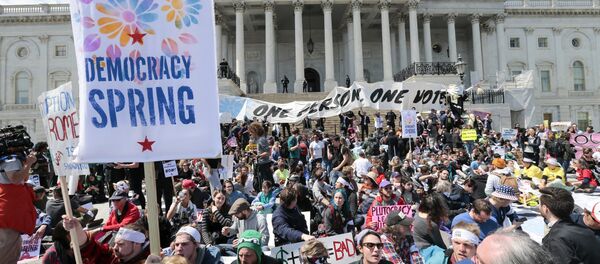— Brian Krassenstein (@krassenstein) June 26, 2018
Footage of the incident posted on Twitter Tuesday, shows protesters playing audio first obtained by ProPublica of crying children who'd been separated from their families as part of the Trump administration's zero-tolerance border policy.
As the audio plays, protesters inch closer and closer to Chao and McConnell, repeatedly asking the politician, "why are you separating families?"
However, rather than standing down and hiding inside the car with her husband, Chao opted to take a stand against the group of demonstrators.
"Why don't you leave my husband alone?" Chao shouted in response, adding that her 76-year-old hubby is "not" separating families.
The Taiwan-born Chao later fired back at the protesters, saying "You leave him alone!"
The 32-second video cuts off with Chao disappearing into the all-black SUV as a protester yells out, "How does he sleep at night?"
Netizens have been quick to offer their own commentary on the matter.
— : Brendan O'Malley: (@brendanomalley5) June 26, 2018
— lauren girard (@laureniscooking) June 26, 2018
— ladyljd (@ladyljd) June 26, 2018
This was the latest incident in which protesters took action against Republican officials since reports first broke of immigrant families being separated. Protesters previously grouped outside the home of Stephen Miller, the senior adviser to US President Donald Trump, and placed fliers calling him a "white nationalist."
— UndocuBlack Network (@UndocuBlack) June 26, 2018
This incident also comes on the heels of California Democratic Rep. Maxine Waters' calls to publicly confront Trump officials.
"If you see anybody from that cabinet in a restaurant, in a department store, at a gasoline station, you get out and you create a crowd and you push back on them and you tell them they're not welcome anymore, anywhere," Waters said at a speaking event in Los Angeles on Saturday.
Trump signed an executive order last week that stated families crossing into the United States illegally would no longer be separated after images of immigrant detainment facilities drew strong comparisons to concentration and internment camps.



